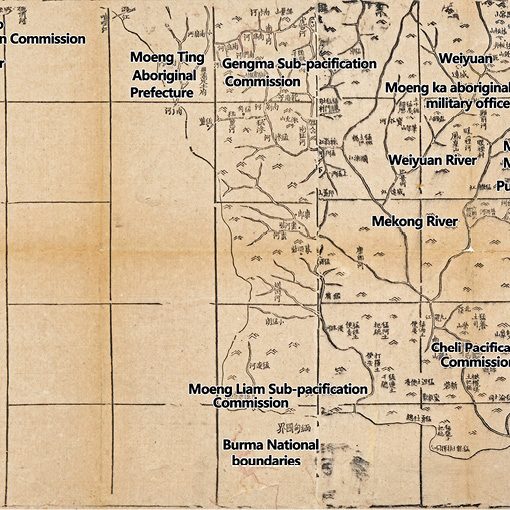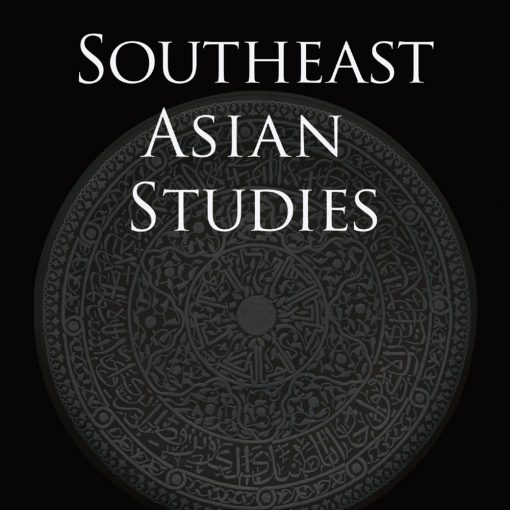Contents>> Vol. 9, No. 3
Contested Territory: Ðien Biên Phu and the Making of Northwest Vietnam
Christian C. Lentz
New Haven and London: Yale University Press, 2019.
Ðien Biên Phu, the site of the decisive battle against French colonial rule, is a key element of Vietnamese national memory. In his brilliant study of Ðien Biên Phu, the geographer Christian Lentz employs an innovative conceptualization of “territory” to write an alternative history of the place that breaks down its narrow association with military tactics and national independence. A remote upland Tai principality on the upper Black River before integration in the Vietnamese geobody, the place became “a beacon of anticolonial liberation before quietly but forcefully staking a sovereign claim at territory’s edge” (p. 236). Lentz’s account locates the military campaign in a broader historical context, taking into account preceding and subsequent sociopolitical, economic, and cultural dynamics.
Contested Territory combines historical and political geography with a good dose of ethnography. This links the book with recent anthropological works on upland Southeast Asia as a trans-ethnic space. Lentz situates the culturally diverse upper Black River basin and its complex sociopolitical dynamics within the disruptive historical forces of colonialism and the Cold War. He explores the historical contingencies that led to the integration of a vaguely defined upland frontier region into the confines of Vietnamese national territory.
The book is divided into six chapters that span chronologically from the first attempts of revolutionary mobilization during the late-1940s to the aftermath of the battle and the establishment of Democratic Republic of Vietnam (DRV) rule in the uplands. Lentz introduces a “long 1950s” (p. 2), embedding the anticolonial struggle and its climax in 1954 within larger sociopolitical dynamics. He demonstrates how territory—understood not as just a given spatial container—is produced and contested: “a spatial outcome of contingent contests in specific contexts” (p. 243). Territory is both process and strategy, with bodies/labor and (contested) agrarian resources playing key roles in shaping the emerging Vietnamese geobody. Lentz’s innovative theoretical approach is flanked by meticulous studies of newly available archival sources, most notably local accounts written by Kinh and Tai cadres.
It is certainly one of the main merits of this excellent book that it recognizes the historical contribution of ethnic minorities to Vietnamese national independence. By carefully analyzing the various interactions and contestations in the Lao-Vietnamese borderlands, Lentz draws a complex picture beyond the simple colonizer vs. colonized binary. The region was shaped by diverse sociocultural hierarchies and interactions that later informed the control and mobilization attempts by French colonial and Vietnamese revolutionary forces—both vying for alliances with local Tai elites.
Chapter 1 starts with the Japanese intervention in March 1945 and the escape of 200 Communist prisoners from a French prison in Son La by the Black River. This small event heralded “a longer and contested process of Vietnamese state making” (p. 23), with the First Indochina War as a violent arena. One goal of local cadres in the Black River valley was to overcome colonial divide-and-rule politics that had privileged certain Tai clans and now drove disaffected Tai leaders toward the Vietminh.
Focusing on the role of local Tai cadres in the anticolonial struggle and their views of national unity sheds new light on how traditional muang statecraft was slowly transformed into DRV administration. Even though the first revolutionary movements were subdued by the French in 1950, they created lasting relationships and ideas. Notions of Tai-Kinh revolutionary solidarity emerged and corresponded with new administrative configurations. As Lentz puts it: “the state did not just climb hills but was pulled upward as well” (p. 33).
Lentz stresses local agency in state making in the hills and related discursive processes (e.g., the “vast land, scarce people” narrative). This can be read as criticism of the simplistic binary of state-making lowlanders vs. autonomous “Zomians.” Tai cadres contributed to shaping the idea of a socialist state and tacit administrative reforms, even though many Hmong and Dao groups remained wary of Tai dominance in the region.
The military conflict of the First Indochina War entailed agricultural crisis and famines due to corvée and food requirements. New ideas of rural development emerged while Vietnamese cadres observed and reported local conditions and created new discourses of agrarian subsistence. Salt distribution became one means to recruit popular support for the revolutionary cause. The affective dimension of these early revolutionary exchanges and the implications for Tai-Kinh solidarity are key to understanding later events.
Lentz describes the Vietnamese postcolonial state as a contingent outcome of contested state-making processes. In Chapter 2, the crossing by the People’s Army of the Red River in 1952 and the shift from guerrilla warfare to regular combat marked a new stage in this process. The uplands emerged as the “Northwest Zone” and became an “integrated part of Vietnam’s geobody” (p. 76). With the diverse mobilization attempts and stronger Kinh presence in the region, ideas of “ethnic minorities” and “development” took shape. Kinh cadres still sought after recruiting Tai elites, arguably “prioritizing national unity and territorial stability over social transformation” (p. 81). Tai elite control over agrarian resources (land and labor) remained—an ongoing contradiction for non-Tai minorities and radical cadres.
Chapter 3 addresses the crucial agrarian question that informed the peasants’ plight and revolutionary reform attempts. Shifting between “enthusiasm and anxiety” (p. 96), the population betrayed a deep ambivalence toward the new, emerging political configurations with their ongoing contests over land, bodies, and food. Lentz makes a strong point when he moves agrarian resources from the realm of mere subsistence to being “inextricable from relations of territorial rule” (p. 97).
Again, Lentz stresses the affective dimension of subsistence struggles in times of political reform and military mobilization. Contradictions between social transformation and the lingering reliance on local hierarchies for local governance and territorial administration increased. Tai peasants suffered from dependencies within old muang structures and their corresponding tax and corvée requisitions (increasingly translated into service for the new state). In combination with war effects and trade blockades, the misery triggered public discontent and sometimes migration waves to Laos.
Despite spreading ideas of class struggle, uncertainties and tensions within the DRV shaped administrative reforms—or lack thereof—in the Black River region. The fact that radical reform was not implemented was arguably key to the success of the Ðien Biên Phu military campaign. Radical cadres and poor peasants could not (yet) challenge Tai elites’ control of land and labor. Consequently, “securing territory and population trumped reforming class and status” (p. 105).
Rather than land reform, mobilizing labor (for transport and infrastructure construction) became crucial for shaping Vietnam’s geobody in the uplands. Lentz’s discussion of the dân công labor service is one of the most compelling discussions in the book. It is key to understanding the entanglements between land, labor, and resources in the context of the military campaign. Labor requisitions increased the predicament of agricultural labor, not least because female labor became increasingly removed from agriculture.
Next to shifting gender relations, the dân công system also entailed a stronger integration of upland groups that were previously exempt from corvée requisitions. More generally, body and geobody became intertwined. Anxieties about harvest prevailed; Vietnamese cadres arrived “to protect the crop” (p. 115). Resulting food shortages fostered general feelings of an “existential struggle” (p. 123). How hunger threatened legitimacy could have been explored in more depth through additional oral history research.
Chapter 4 deals with the logistics of the military campaign—a meticulous, almost nerdy analysis of a vast amount of archival sources. The DRV’s organization of food and ammunition required detailed “spatial knowledge of things and people” and demonstrated effective “state learning practices” (pp. 134–135). As Lentz’s reconstruction of the final stage of the Ðien Biên Phu campaign reveals, France’s underestimation of the DRV’s capacity to transform agricultural resources into portable provisions was a crucial factor in the French defeat.
Chapter 5 discusses the same story from a bottom-up perspective, illustrating the contingencies and tensions within the unfolding of the Ðien Biên Phu campaign. In this chapter, Lentz is back to full epistemological strength: bolstering his compelling arguments with a wide array of hitherto unnoticed, surprising sources. Giving voice to local cadres and peasants, Lentz illustrates the everyday experiences during the campaign—from the anxieties of peasants turned dân công, worrying about their subsistence, to Kinh cadres who entered into close relationships with local Tai families, both tendencies hinting at complex affective and sociopolitical relationships.
Lentz gives a beautiful account of state making under war conditions, describing the (aggressive) mobilization of people and resources and the diverse responses of the population with their anxieties and hopes. Most peasants kept on yielding resources due to a mix of coercion and consent. Meanwhile, the growing militarization and discourses of class struggle toward the final stage of the campaign intensified the rural predicament. Violence and terror became everyday experiences for many, belying the narrative of the struggle against foreign oppression.
Territorial struggles did not cease after the victory of Ðien Biên Phu. As Chapter 6 vividly illustrates, the new state continued to be shaped by contestations about territory and its diverse population. The forceful agrarian transition provoked anxieties and unrest in the newly established albeit short-lived Thái-Mèo Autonomous Zone. Taking the example of millenarian movements, Lentz discusses the ambiguous effects of DRV territorialization on populations that had experienced severe transformation of their lifeworlds.
Toward the end of the book, Lentz pays more attention to non-Tai ethnic minorities and how territorial politics increasingly concerned with security affected their lifeworlds. Any alternative ideas of political or economic sovereignty provoked severe responses from the state. DRV rule now shaped lives in the remotest villages in the postcolony. Finally, the Black River region had became “Northwest Vietnam.” As Lentz summarizes in the epilogue: “Place, region, and people became Vietnamese through mass mobilization of residents, incorporation of Tai muang political structures, and military conquest of space” (p. 244).
The state’s power to mobilize the population, administer territory, and deploy an army crucially altered social relations toward the end of the long 1950s. The social and economic costs of this process resulted in violent reactions later, in peacetime. Meanwhile, Ðien Biên Phu turned into a symbol of the heroic “Vietnamese” struggle against foreign dominance, obscuring the internal diversity and tensions of the campaign: contested meanings instead of contested territory.
On each page of this compelling book, the reader can feel the author’s commitment and the more than 10 years of intellectual work that inform it. Lentz’s fine writing opens up new perspectives on how global history unfolds on the ground, and on the contingencies and ambiguities of state-making processes. This book will certainly remain the definitive study of Ðien Biên Phu and should inspire related projects at the interstices of history, geography, and ethnography.
Oliver Tappe
Institut für Ethnologie, Universität Heidelberg
DOI: doi.org/10.20495/seas.9.3_480



